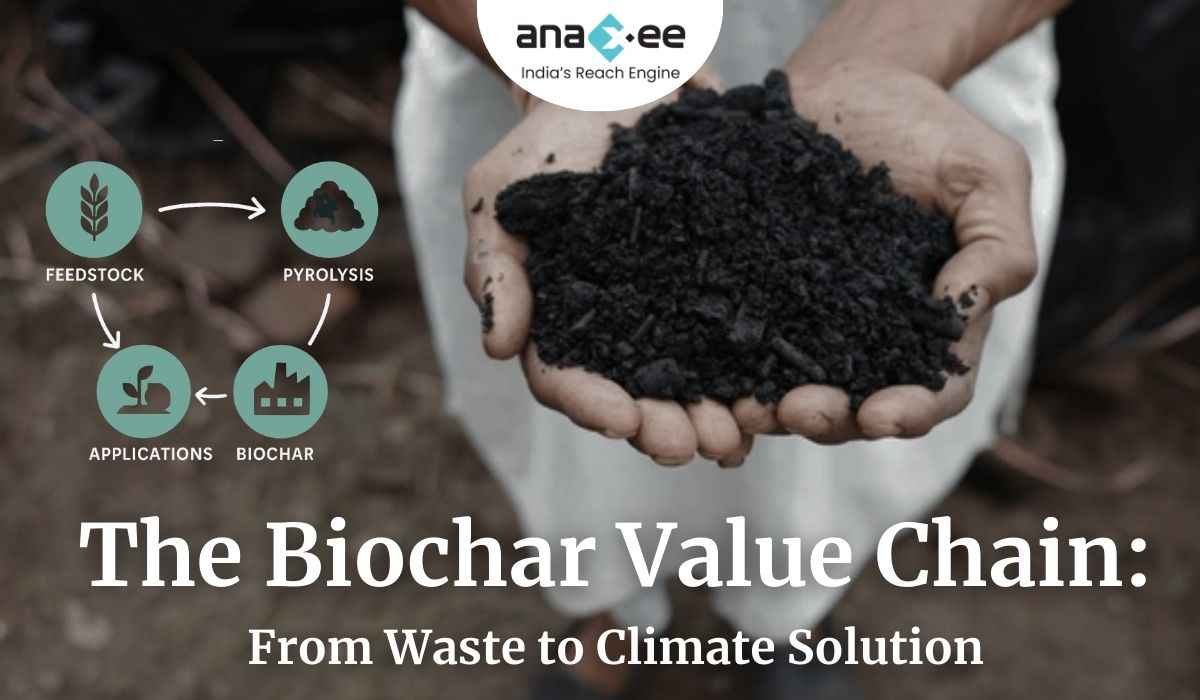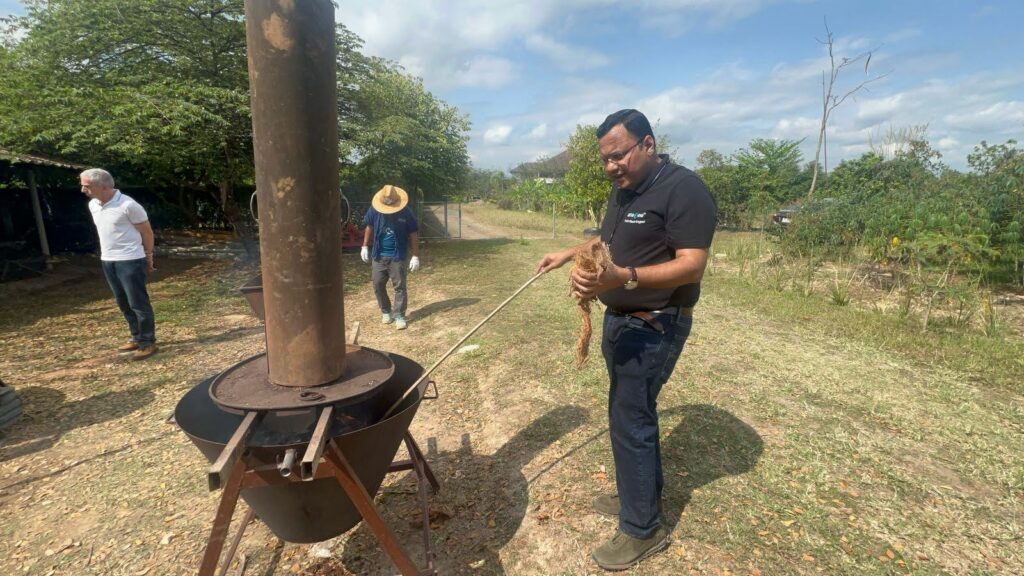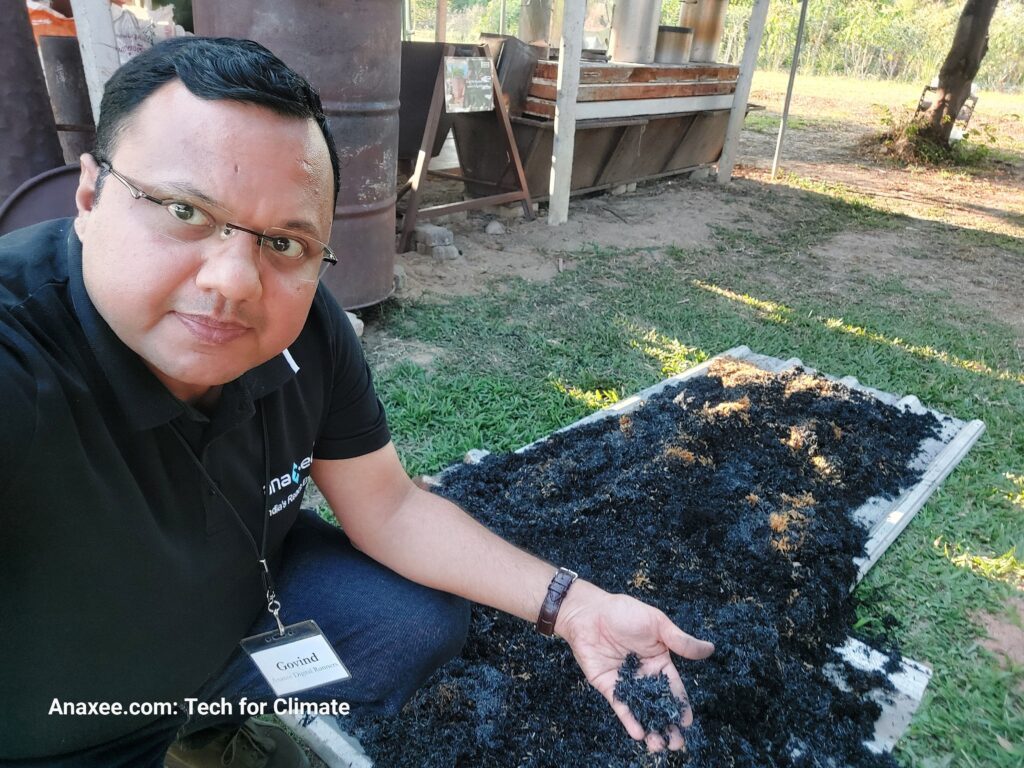BLOG

The Biochar Value Chain: From Waste Biomass to Climate Solutions
The Biochar Value Chain: From Waste to Climate Solution
Introduction
When people talk about carbon removal, the conversation often focuses on futuristic machines or billion-dollar projects. But one of the most effective tools is already around us: biochar.
What makes biochar special is not only its ability to store carbon for centuries but also the way it connects farmers, industries, and local communities in a chain that turns waste into value. This “biochar value chain” starts with biomass residues and ends with climate benefits, soil improvement, and new income streams.
In this blog, we’ll unpack the biochar value chain step by step — from feedstock to pyrolysis to applications — and show why it is becoming one of the most scalable climate solutions of our time.
1. Understanding the Biochar Value Chain
At its core, the biochar value chain links together:
Feedstock sourcing – agricultural residues, forestry waste, animal manure, food processing leftovers.
Conversion process – mainly pyrolysis, which transforms biomass into biochar plus co-products.
Applications – biochar used in soils, construction, water purification, animal feed, and more.
Carbon finance – projects earn carbon credits for the carbon they lock away.
This chain is flexible. In some places, it is small-scale, community-driven with simple kilns. In others, it is highly industrial, producing thousands of tons annually.
2. Feedstock: Turning Waste into Opportunity

Biochar projects begin with feedstock — the raw biomass. Not all feedstock is equal, and sustainability is crucial.
🌾 Types of Feedstock
-Agricultural residues: rice husks, maize stalks, sugarcane bagasse.
-Forestry residues: wood chips, sawdust, pruning waste.
-Animal waste: manure, poultry litter.
-Food processing residues: shells, husks, fruit pits.
-Other waste streams: sewage sludge, organic municipal waste.
♻️ Why Feedstock Matters
-If biochar is made from waste biomass, it creates a double benefit: preventing methane emissions from open decomposition while locking carbon.
-If made from purpose-grown crops, it risks competing with food production or land use. That’s why most high-quality projects stick to true waste materials.
🌍 Sustainability Concerns
Feedstock must be traceable, free from contaminants, and not diverted from other uses (like animal fodder or energy). Good projects document every stage of sourcing.
3. Pyrolysis: The Heart of Biochar Production
Once feedstock is collected, it undergoes pyrolysis. This is where the real transformation happens.
🔥 What is Pyrolysis?
A thermochemical process that heats biomass at 500–700°C in a low-oxygen environment. The result is:
-Biochar (solid carbon)
-Bio-oil (liquid fuel)
-Syngas/biogas (usable gas energy)
-Heat and electricity (in advanced systems)
🛠️ Types of Pyrolysis Technologies
-Low-tech / artisanal kilns (like Kon-Tiki kilns, soil pits, micro-gasifier stoves).
-
✅ Advantages: Cheap, accessible, creates rural jobs.
❌ Challenges: Lower efficiency, harder to measure methane emissions.
-High-tech / industrial pyrolysis (fixed-bed, rotary kilns, auger reactors).
-
✅ Advantages: High efficiency, precise monitoring, by-product utilization.
❌ Challenges: Requires big investment and stable feedstock supply.
⚖️ Striking a Balance
Some mid-tech systems blend artisanal and industrial methods, offering flexibility without huge infrastructure costs. This makes pyrolysis adaptable across geographies.
4. The Variety of Biochar Applications
The end use of biochar is where the value chain becomes diverse and exciting. Unlike other carbon removal technologies that only store carbon, biochar has multiple functional uses.
🌱 Agriculture
-Improves soil fertility, crop yields, and water retention.
-Reduces fertilizer demand.
💧 Water & Waste
-Filters heavy metals and pollutants.
-Used in wastewater treatment.
-Helps with mine remediation and erosion control.
🏗️ Construction & Industry
-Strengthens concrete and asphalt.
-Provides insulation and reduces cement demand.
🐄 Livestock & Food Chain
-Added to animal feed to improve digestion and reduce methane emissions.
-Used in food packaging as a safe additive.
🌍 Circular Economy
Every application adds new revenue streams. For example, selling biochar for soil amendments creates local markets, while industrial applications attract global buyers.
5. By-Products: Beyond Biochar
Biochar production doesn’t stop at the solid product. Depending on the technology, valuable co-products emerge:
-Syngas and heat for electricity or cooking.
-Bio-oil as a renewable fuel.
-Wood vinegar and other chemicals for agriculture.
In some cases, these co-products can make the entire operation self-sustaining — even powering the pyrolysis plant itself.
6. Adding Carbon Finance to the Chain
The big game-changer for the biochar value chain is the voluntary carbon market. By proving that carbon is locked away permanently, projects can issue carbon credits.
📜 Registries and Methodologies
-Verra (VM0044 Biochar Utilization)
-Puro.earth (Biochar Standard)
-Isometric
-CSI Artisan & Global Biochar C-Sink
These methodologies set strict rules: feedstock eligibility, production monitoring, end-use verification. Buyers pay for the carbon removal value of biochar, often at higher prices than typical avoidance credits.
7. Socio-Economic Impact of the Biochar Chain
For many regions in the Global South, biochar is not just about climate — it is about livelihoods.
-Creates rural jobs in biomass collection and pyrolysis.
-Provides farmers with affordable soil amendments.
-Brings women and marginalized groups into production networks.
-Supports community resilience against climate shocks.
Case studies (like Carboneers in India, Ghana, and Nepal) show how biochar projects can increase household incomes by 500% or more while delivering verified climate impact.
8. Challenges in the Value Chain
Like any system, the biochar chain faces hurdles:
-Supply chain risks – securing consistent feedstock.
-Monitoring issues – especially in decentralized artisanal projects.
-Market mismatch – suppliers need $180/ton, buyers want $130/ton.
-Awareness gap – many industries and policymakers still underestimate biochar’s potential.
Solutions include stronger digital MRV tools, cooperative models for smallholders, and long-term offtake contracts that give producers stability.
9. Why the Biochar Value Chain Matters
Unlike other CDR methods that rely solely on technology, the biochar value chain:
-Links waste to value.
-Combines climate action with economic development.
-Offers co-benefits across food, water, and energy.
-Is scalable now, not decades from now.
This makes it one of the most practical pathways to combine carbon removal with sustainable development goals (SDGs).
Conclusion
The biochar value chain is more than a process. It is a system of connections — from farmers managing crop residues, to engineers running pyrolysis reactors, to buyers of carbon credits, and communities benefiting from healthier soils and new incomes.
At every stage, biochar delivers multiple wins: locking carbon, improving ecosystems, generating jobs, and creating renewable by-products.
As the world looks for scalable, durable carbon removal strategies, the biochar value chain shows that solutions can be both high-impact and accessible.
In short: biochar doesn’t just remove carbon. It transforms waste into opportunity and connects climate goals with human well-being.
About Anaxee:
Anaxee drives large-scale, country-wide Climate and Carbon Credit projects across India. We specialize in Nature-Based Solutions (NbS) and community-driven initiatives, providing the technology and on-ground network needed to execute, monitor, and ensure transparency in projects like agroforestry, regenerative agriculture, improved cookstoves, solar devices, water filters and more. Our systems are designed to maintain integrity and verifiable impact in carbon methodologies.
Beyond climate, Anaxee is India’s Reach Engine- building the nation’s largest last-mile outreach network of 100,000 Digital Runners (shared, tech-enabled field force). We help corporates, agri-focused companies, and social organizations scale to rural and semi-urban India by executing projects in 26 states, 540+ districts, and 11,000+ pin codes, ensuring both scale and 100% transparency in last-mile operations.
Ready to collaborate on your next Climate or Carbon project?

Email us at: sales@anaxee.com


